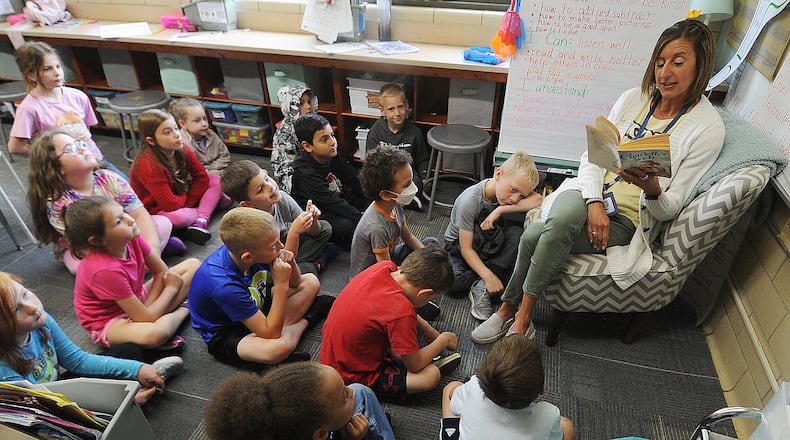The report comes as Ohio Gov. Mike DeWine pushes state legislators to require K-12 schools to use specific teaching practices — methods that would incorporate more phonics and skills to learn how to read. The debate comes as the Ohio Statehouse is working to finalize the two-year budget by June 30.
In addition, the state hopes to make improvement with a larger-than-normal set of elementary school students who didn’t sufficiently learn vital reading skills during the pandemic and are now behind.
In the 2021-2022 school year, 59.8% of third-grade students tested proficient in reading, according to state exam results, while in the 2018-2019 school year — the last one before the pandemic — 66.7% of third graders tested proficient in reading.
Students in poverty, or who are Black or Hispanic, were impacted even more according to the data, as were students who do not speak English as their first language.
“Far too many students in Ohio aren’t learning to read,” said Heather Peske, president of the National Council on Teacher Quality, a Fordham program that conducted the study.
The study reviewed 26 Ohio undergraduate and graduate teacher prep programs in elementary-school reading. Miami University and the University of Dayton were included.
Fordham gave A’s to programs that covered five components of reading and did not use contrary practices, but programs were rated poorly that inadequately incorporated reading science into their coursework and may also promote multiple contrary practices, according to Fordham.
Fordham gave the University of Dayton an “A” for its use of phonemic awareness, phonics, fluency, vocabulary, and comprehension in the study. In contrast, Miami University was given an “F.” Wright State and Central State were given B’s.
“The faculty in our reading program are knowledgeable and skilled in preparing our teacher candidates to teach reading according to the most up-to-date and relevant research in the field,” said Mary-Kate Sableski, an associate professor and the reading program coordinator in UD’s Department of Teacher Education.
Miami University did not immediately respond to a request for comment.
The study’s recommendations for improving elementary reading programs included updating teacher standards, changing the way colleges and university programs are reviewed and creating consequences for colleges that do not pass, using the Ohio Department of Education approved materials, and adding support for existing teachers’ continuing education.
Elizabeth Lolli, superintendent of Dayton Public Schools, said at a press conference announcing the report that she has long been an advocate of using the five reading components. She used to quiz teachers in interviews about the five pillars but said eventually word got around and it was clear when a teacher being interviewed didn’t know what they were talking about.
She said the state needs to make sure materials approved do not interfere with the work that teachers are doing.
“It’s time that the state of Ohio embraces the idea and that we support it through the research, the continued research, and continued evaluation of everything that we’re trying to do here,” Lolli said.
Rep. Tom Young, R-Washington Twp., said Ohio trails too many other states when it comes to the intellectual capital of its residents. A key path to fixing that is investing in higher education, and to get to college, you have to learn to read.
“I keep stating this: higher education, the next level of education in Ohio, is a huge economic engine for us,” he said.
Teacher prep program grades
A: Dayton, Findlay, Marietta, Mount St. Joe, Ohio U., Rio Grande, Youngstown State
B: Akron, Bowling Green, Central State, Ohio State (undergrad), Wright State
C: Wilmington
D: Cleveland State (undergrad and grad), Kent State (undergrad), Ohio State (grad), Shawnee State, Toledo (undergrad), Wittenberg
F: Ashland (undergrad and grad), Defiance, Kent State (grad), Miami, Toledo (grad)
Source: National Council on Teacher Quality, Fordham Institute
About the Author

